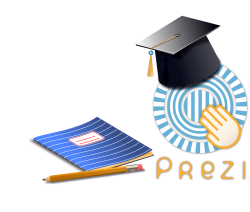10% homework, 40% quizzes, 20% participation….. sound familiar?
The result seems to be students working to achieve a grade as close to 100% as they can, while being confused about how they can even calculate their own grades. Teachers want students to realize the power of a strong work ethic and develop intrinsic motivation necessary for deep learning, however, we often use an enigmatic grading system rather than meaningful feedback. The focus is on the grade achieved rather than the learning. This is problematic and all too common. Learning is not simply an end goal but a process as well.
I use portfolio assessments in my world language classroom according to the following general guidelines.
- Change the vocabulary to assessment and performance-based assessments. It more accurately describes what we, as teachers should be doing.
- Start with the end in mind. The ultimate goal for our students is to develop a certain skill or content knowledge. Therefore, we need learning targets, both a mixture of skills and content, in relation to which we can assess a student’s current ability and progress towards their goal.
- Assessment needs to happen early and often. Students need feedback immediately to know where they stand and specifically where they can improve.
- We don’t need to “grade” everything. If the purpose is to give feedback, then everything does not need to be recorded. Nor is it practical to record grades as much as they could be given.
- Not all grades need to be numerical. What’s wrong with meets standard, approaches standard, exceeds standard with narrative to go with it?
- Informal assessments are as useful as formal assessments. They often take less time, and specific feedback can be given quickly and easily. They serve to guide instruction and student work.
- Grades should be disaggregated. What do you do if a student turns in a project that completed all the requirements and has acquired all the content but turns the project in one day late. Some teachers would take 50% off the total score. So instead of a 95, that student now has a 47. What does that tell the student when factored into the 20% category of projects? When a parent looks at the 45%, is it clear what the student could or couldn’t do? Have categories that represent specific skills: work ethic (turning assignments in on time and completion), collaboration, content, critical thinking, etc.
- Metacognition should be a part of all major assessments. Students need to reflect on the quality of their own work and the contributions they made to a project.
- Open-ended performance assessments that show what a student can do rather than what they can’t, perhaps given freedom to display their achievement of skills as content through the platform of their choosing.
10. Involve your students in the grading process. They can help to choose the wording of the rubrics or alter the categories. They can also peer and self-assess. Rubrics and feedback should be put in kid friendly terms, so they know what they can do to improve.
Here’s an example:
My French II students were doing a unit on French cinema. The goal was for students to gain an understanding of the place the cinema holds in French culture and how that differs in products, perspectives and practices of Americans. The main project was to create a whole class blog for the local community to encourage the viewing of French films from the library. The performance assessments were as follows. They had a conversation with a friend deciding what movie they wanted to see that night and why. They took a description about the movie Les Misérables that we watched that was very short and choppy and made it made it more complex using object pronouns. They chose their own French movie to watch and created a blog post about it, including brief synopsis, general opinion and recommendations. Each student then had to choose one other movie to watch based on the description of their peer and leave a comment to their review.
Each assessment was designed to show what a student was able to do with the language in order to elicit meaningful feedback. I also designed smaller assessments along the way to be informally assessed by peers or the teacher in order to check for progress. All assessments used the same or similar rubrics with shared vocabulary. Each had component of proficiency, content and, if it was a group task, collaboration. The language of the rubrics were put in student-friendly terms, and modified based on student feedback. Each item that was formally or informally assessed was numbered and placed in the portfolio with a note from the students about the success they achieved and an area of improvement to focus on.
At several points along the way, we as a class stopped so the students could reflect generally on where they were in the process and write something longer than they did in the quicker checkpoints. This reflective process was also assessed using a rubric. These reflections can be used to create individualized work for students or serve as a general temperature check for the teacher in scaffolding the work. The half-year reflection point is especially useful for setting goals, and involving parents. With the use of rubrics, students stop discussion around topics like “getting As instead of Bs” and move to using specific language about their own proficiency and work style. This does have to be modeled in the beginning.
Portfolios give students an individualized targeted method of focusing on what they can do with the language. They analyze their own strengths and weaknesses with the help of the teacher and peers to continually improve on specific areas. They can be either housed in a paper folder in the class or digitally on-line. In my world language class, I prefer the digital version, so we can include speaking, writing, and tech-based assessments, like Voicethread, podcasts or blogs. The students are excited to have, virtually or physically, tangible evidence of their success.
My ultimate goal would be for reported “grades” to be a narrative and based on meeting a standard. This however is a larger school or district decision. Therefore, when using a portfolio assessment, a teacher will have to decide for themselves what it would look like as translated into a numeric grade.
I hope we can all begin to contemplate the power of this type of assessment. Think about when you were in school and received grades you did not understand, that did not in actuality assess what you knew or were able to do with the skills and content that were acquired. In most classes, grades are an end result. Learning should be the end result with grades a way to focus the students and give them direction on how to create an individualized implementation plan.







